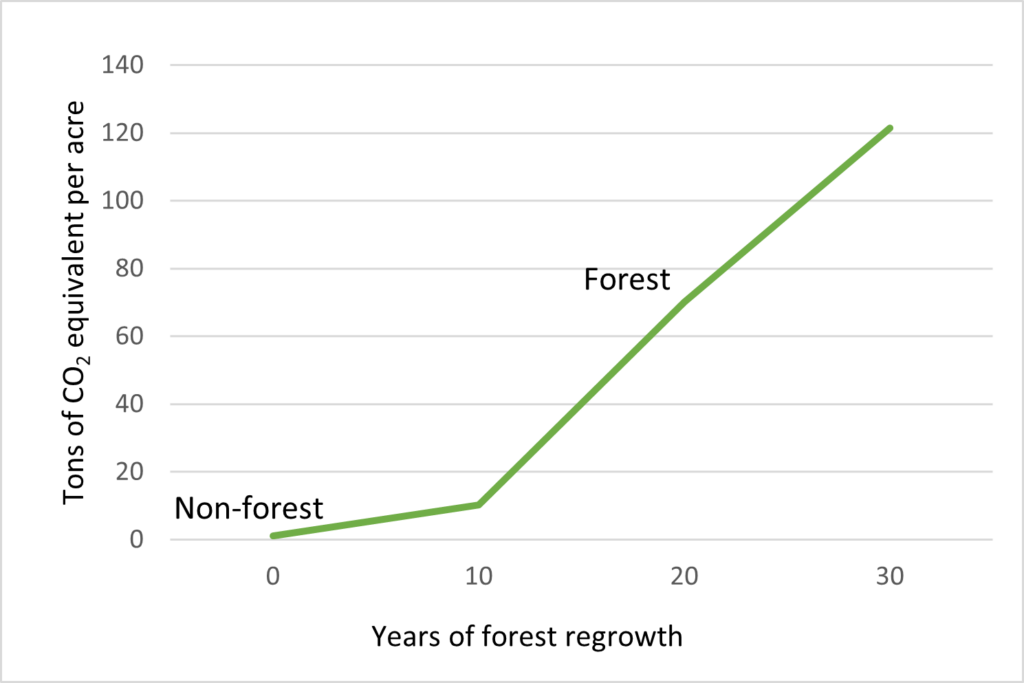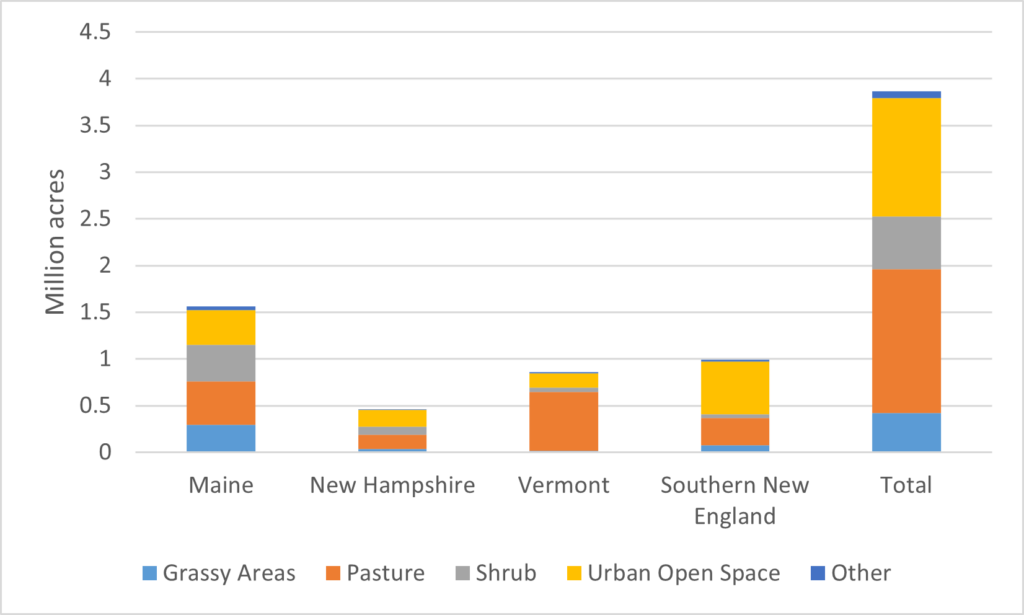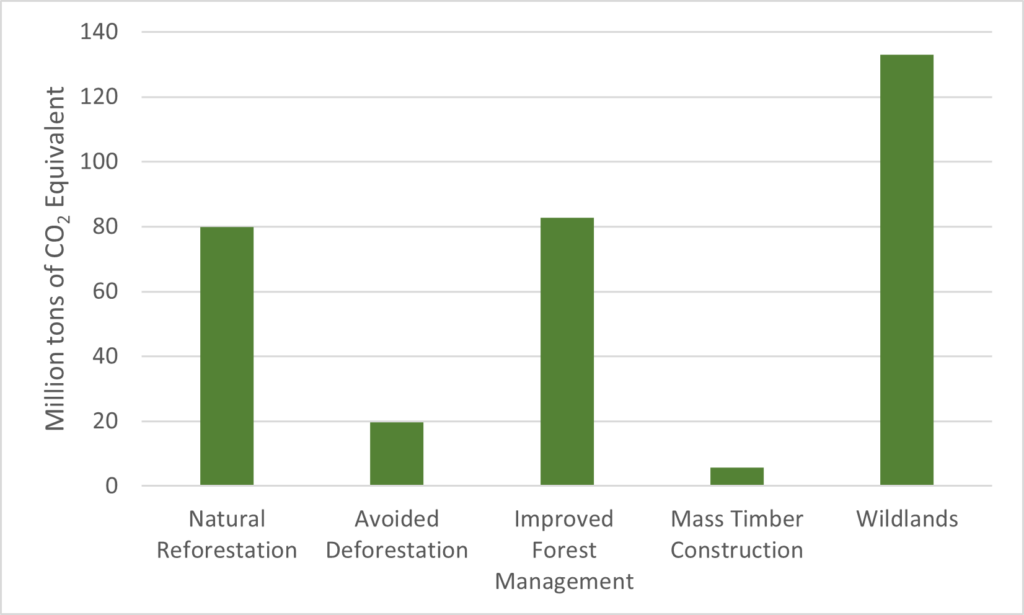Natural Climate Solutions (NCSs) are strategies to steward the earth’s vegetation to increase the removal of carbon dioxide (CO2) from the atmosphere and to reduce CO2 emissions. Natural reforestation, i.e. the spontaneous regrowth of forest vegetation on non-forested land that historically supported forest, is one of the most potent and cost-effective NCSs. Yet, strangely, it is often overlooked.
The world’s forests currently absorb about 30% of annual CO2 emissions. Natural reforestation, if implemented to its full potential across the globe, could absorb an additional 25% of the world’s annual CO2 emissions. The power of reforestation comes from the much higher accumulation of carbon that occurs in forests compared to non-forest vegetation such as grass (Fig. 1).
A common misconception is that reforestation requires planting trees, and thus the associated cost of nursery seedlings and labor. This can be hundreds of dollars per tree and labor costs over several years. But in regions like New England in which the vegetation naturally reverts into forest over time, tree seedlings will spontaneously grow in grassy areas, abandoned pastures, and vacant lots – if we let them. So, reforesting would save money while capturing CO2 emissions.
Susan Cook-Patton, Ph.D., senior forest restoration scientist at The Nature Conservancy, tells a revealing story.
“Ten years ago, I worked with over 100 … volunteers to plant more than 20,000 trees along Chesapeake Bay,” she said. “And we found that the ones that grew best were mostly trees we didn’t plant. Instead, it was the trees that grew naturally from seeds or roots already in the ground. … It was a good and humbling reminder that nature knows what it is doing.”
Natural reforestation has generally been overlooked in New England-based climate mitigation literature because there is a perception that the opportunity is small and therefore the carbon benefits insignificant. The primary focus has been on better management of existing forests (which, of course, is very important too). Yet right now, almost 4 million acres of land are available for reforestation in New England (Fig. 2) – nearly 10% of the region’s land area. Importantly, this acreage does not include active cropland needed for food production.
The largest opportunities for reforestation are in urban open space and in pasture, with the former more prominent in southern New England and the latter more prominent in Vermont and Maine (Fig. 2). In addition to carbon benefits, reforesting urban areas promotes tree cover that eventually cools neighborhoods, reduces the cost and emissions of air-conditioning, reduces air pollution and associated human health problems, and provides additional green spaces for many residents.
What is the potential carbon storage benefit from reforestation in New England? Reforesting even 20% of the available acreage in the region – which would leave many public recreational areas and pasturelands open, along with grassy habitat areas – would sequester ~80 million additional tons of CO2e in the next 30 years. This carbon benefit is equivalent to removing 574,000 cars from the road each year for 30 years. Compared to better known natural climate solutions in New England, natural reforestation stacks up well (Fig. 3).
In addition to the carbon benefits of natural reforestation, there are also significant habitat benefits to this strategy. Reforestation provides 15 to 20 years of habitat for species that specialize in young, shrubby forests. In contrast, the common practice of cutting mature forests to create young forest habitats results in a steep loss of carbon. Natural reforestation is therefore a win-win for both climate mitigation and biodiversity.
In short, natural reforestation, though often overlooked, is a cost-effective way to allow our lands to sequester more carbon and to help mitigate climate change, while promoting habitat for many species, including humans.

Figure 1. Carbon accumulation (not including soil carbon) per acre of land in non-forest (time 0) compared to re-growing forest over a 30-year time period. Data reflect a beech-maple forest in the Northeastern U.S.

Figure 2. Reforestation opportunities by state and land cover type across New England. Southern New England = Massachusetts, Connecticut, and Rhode Island combined. Data from Reforestation Hub

Figure 3. Carbon mitigation benefits over 30 years for natural reforestation and four other natural climate solutions in New England, each graphed at 20% of their total opportunity for the region. Reforestation data from the Reforestation Hub. Data on the other four NCS from New England’s Climate Imperative.